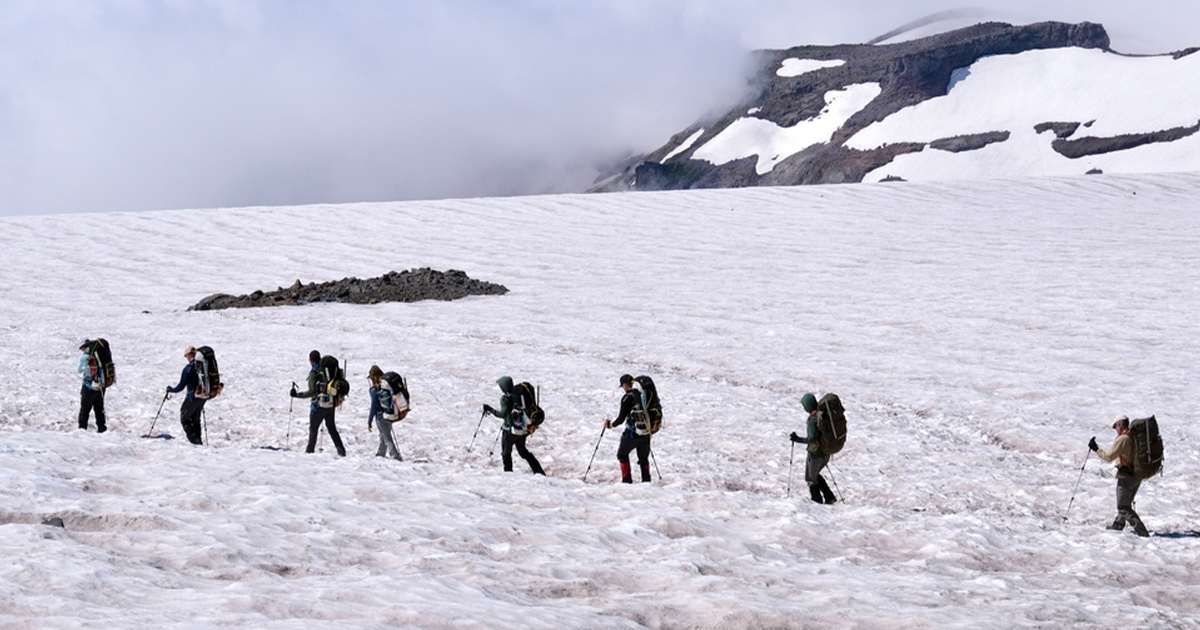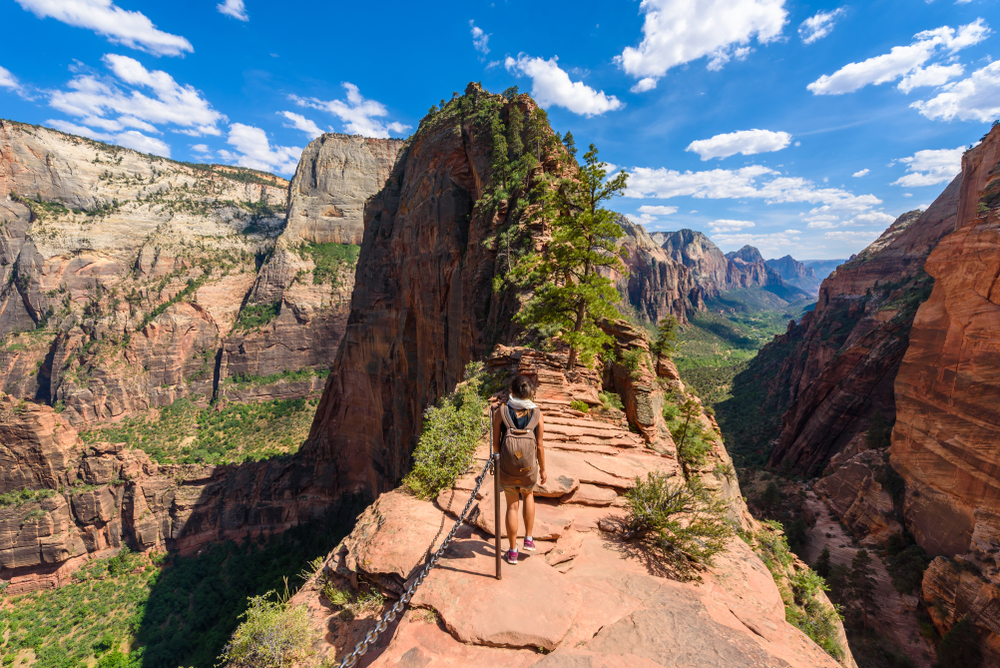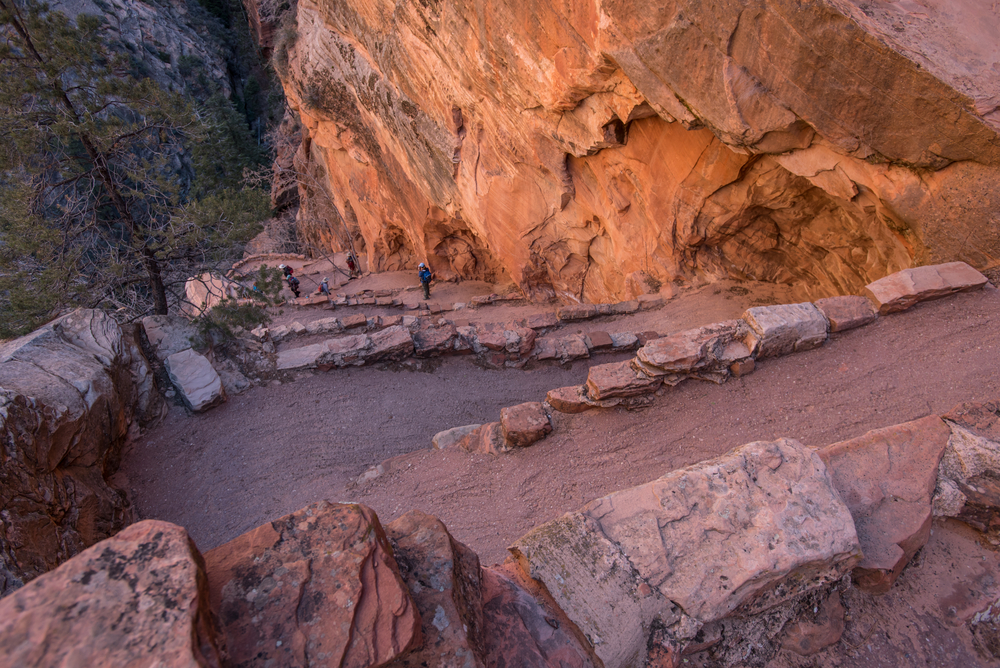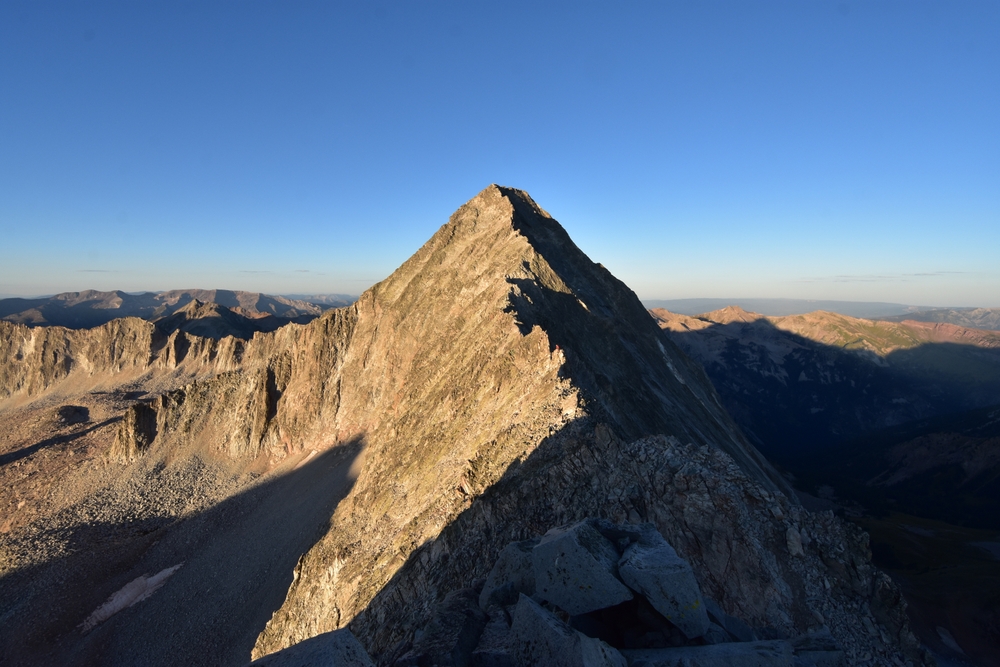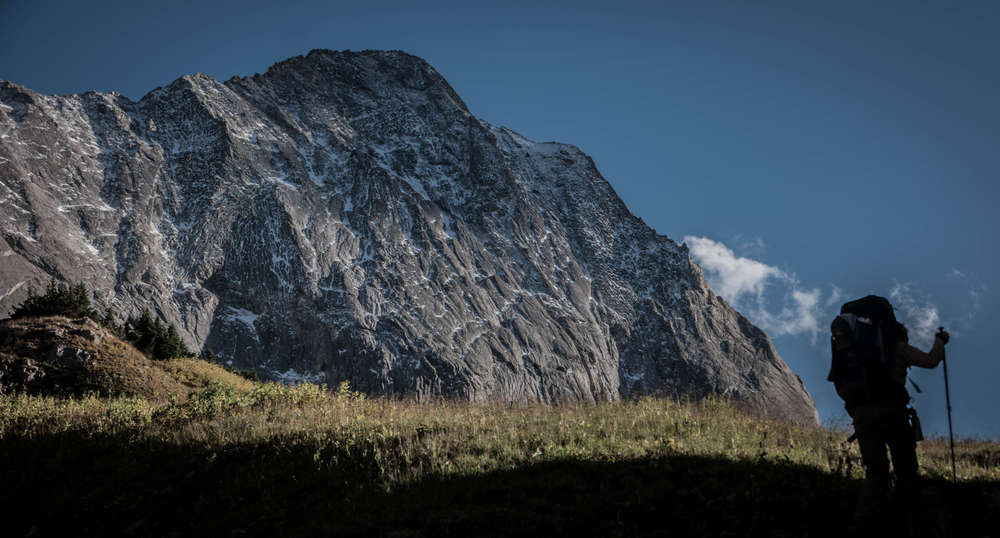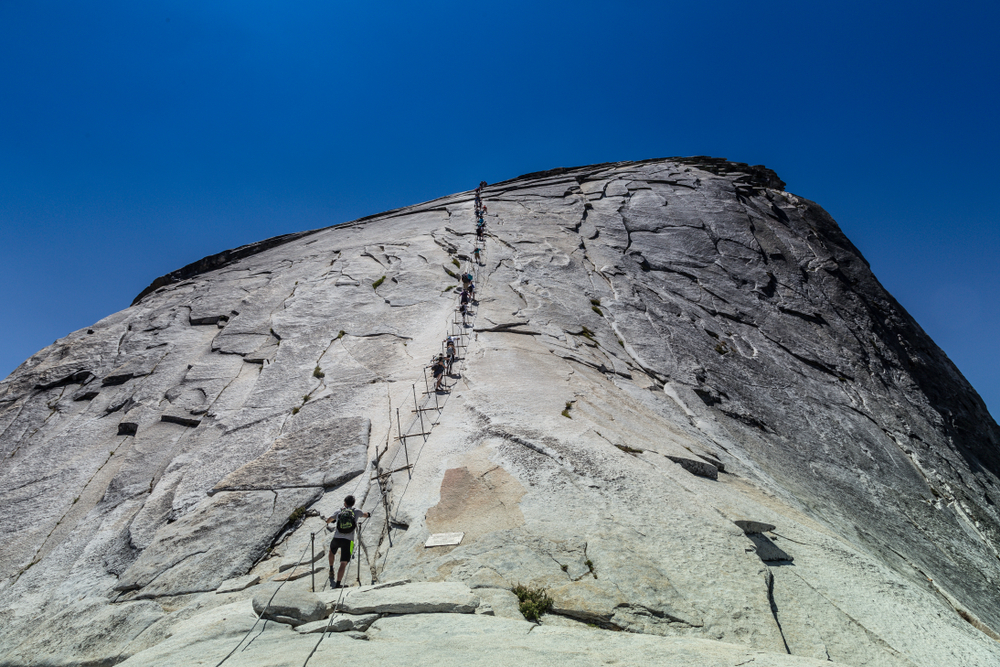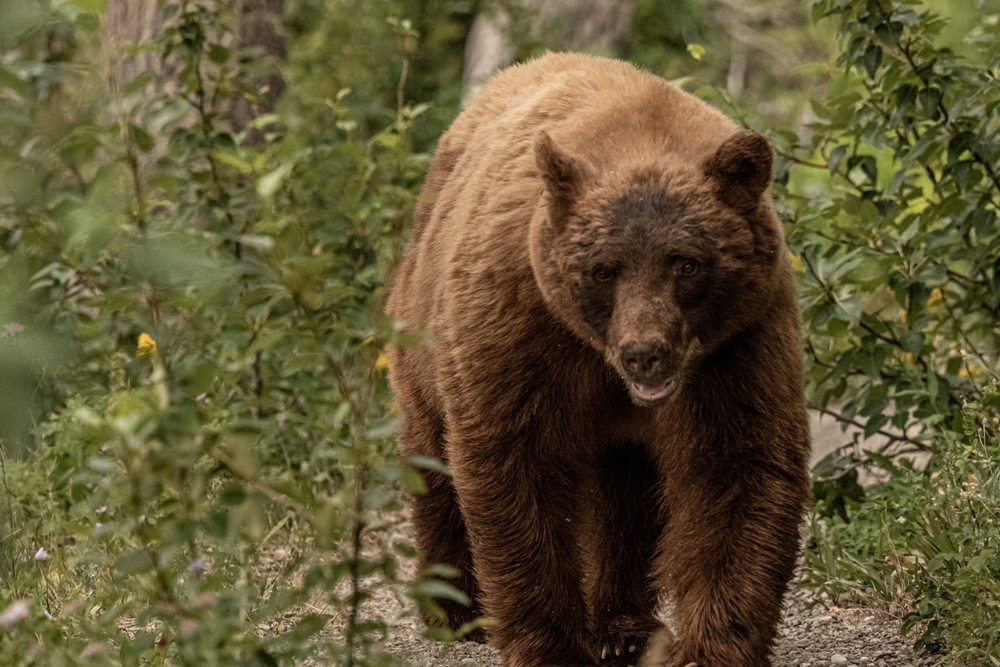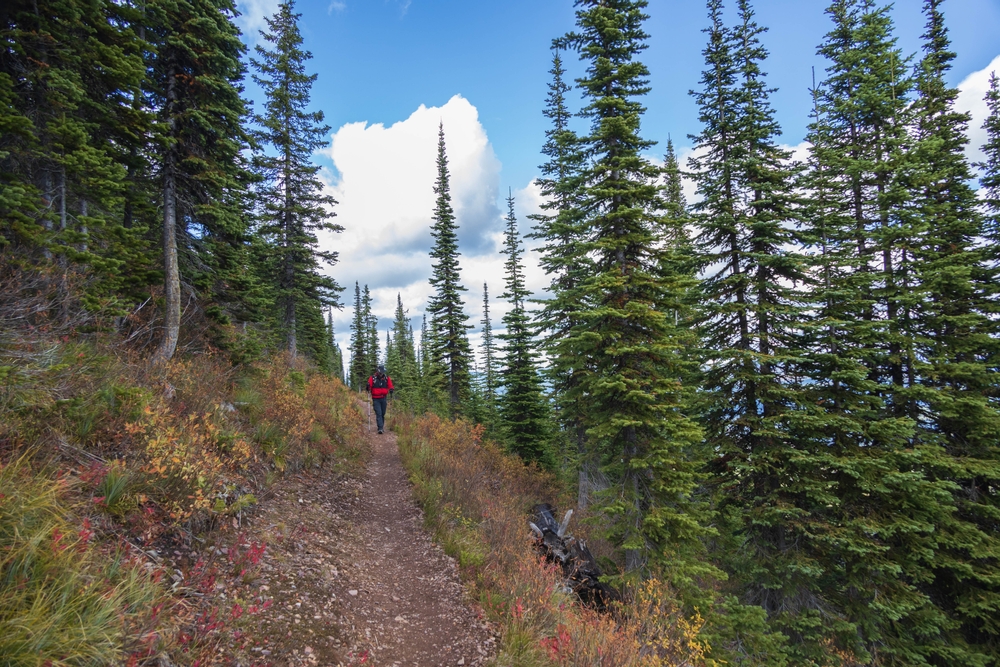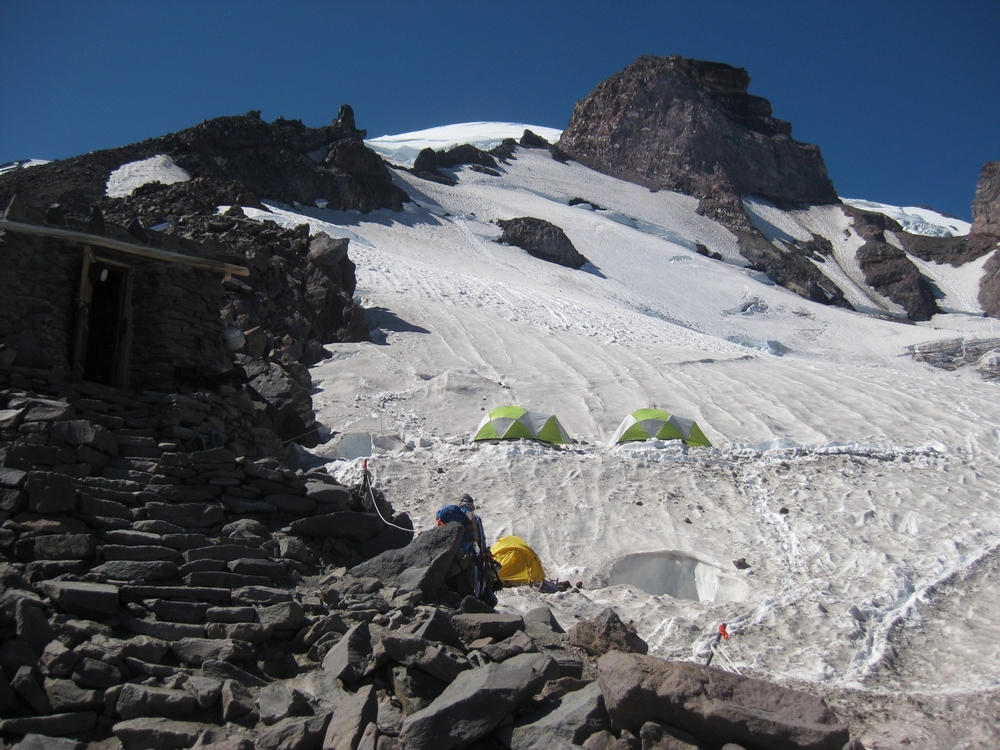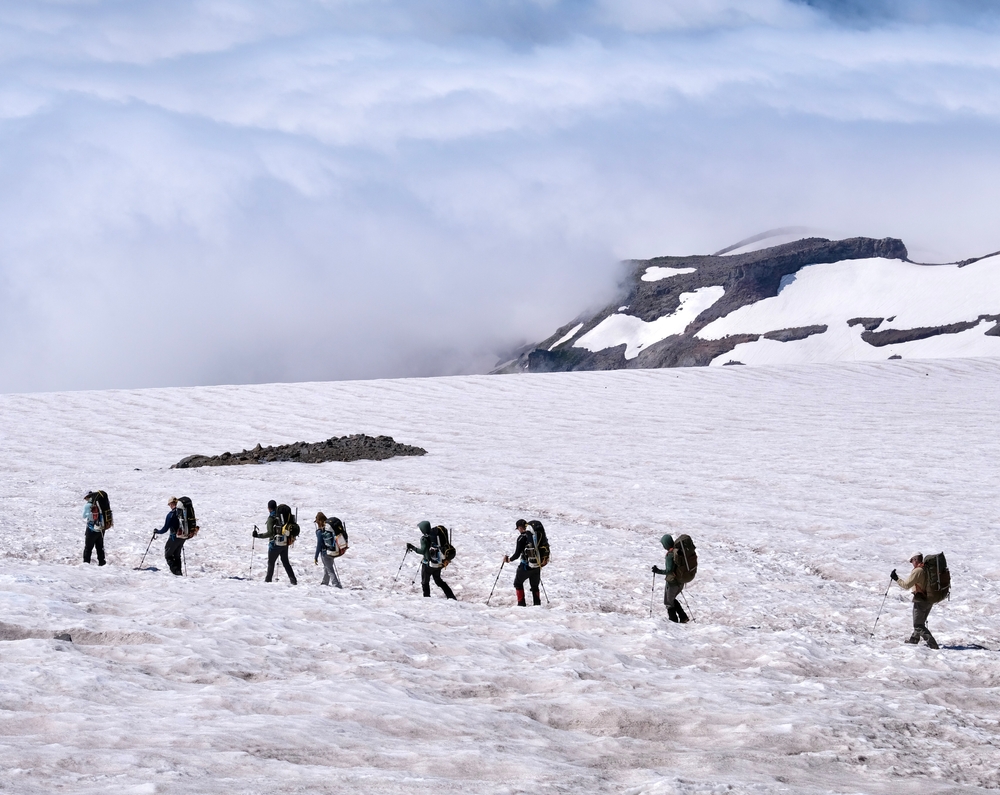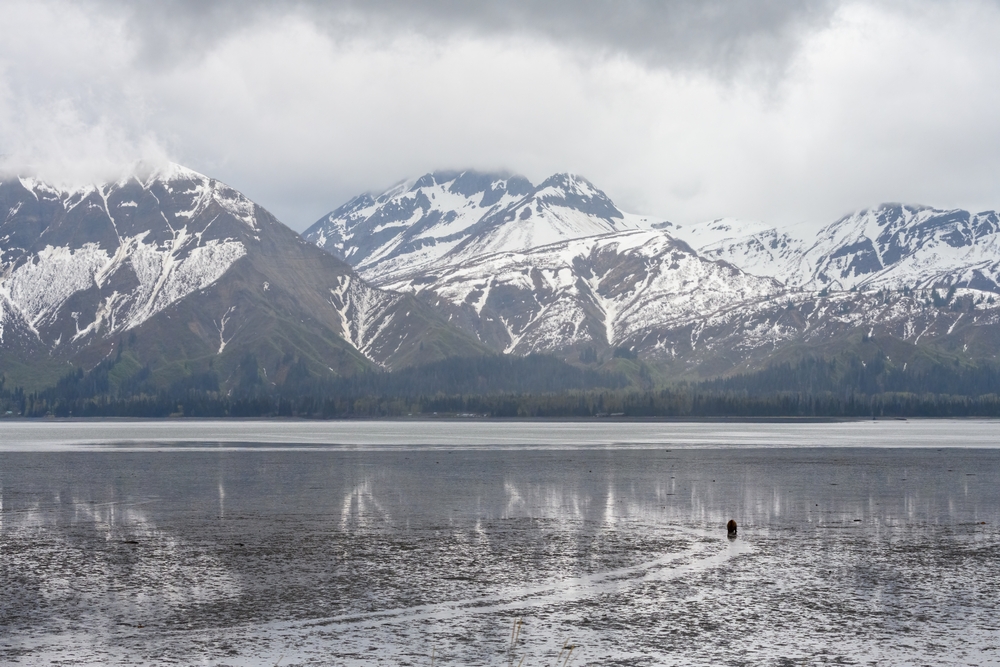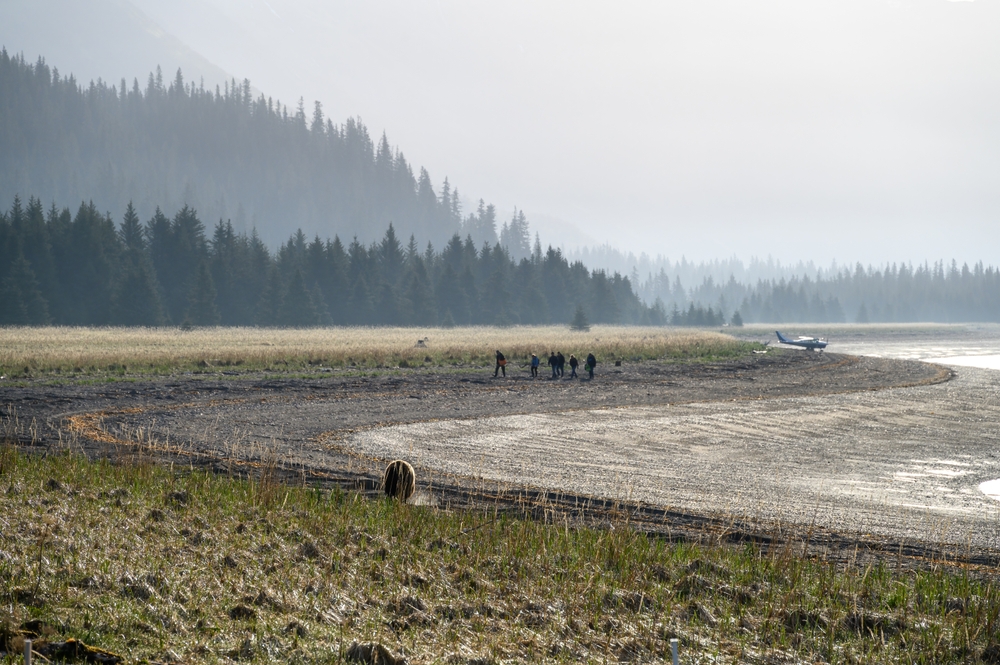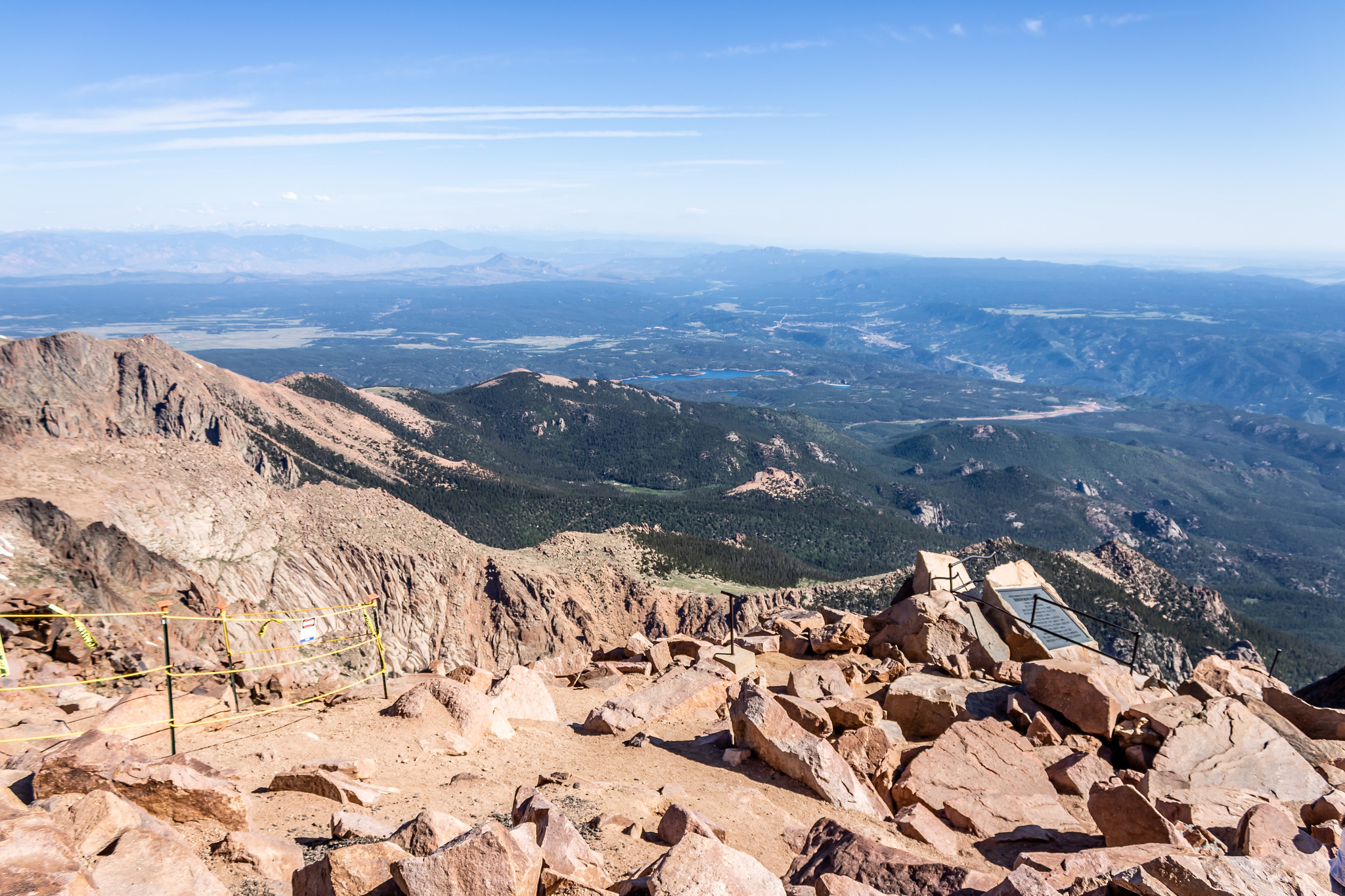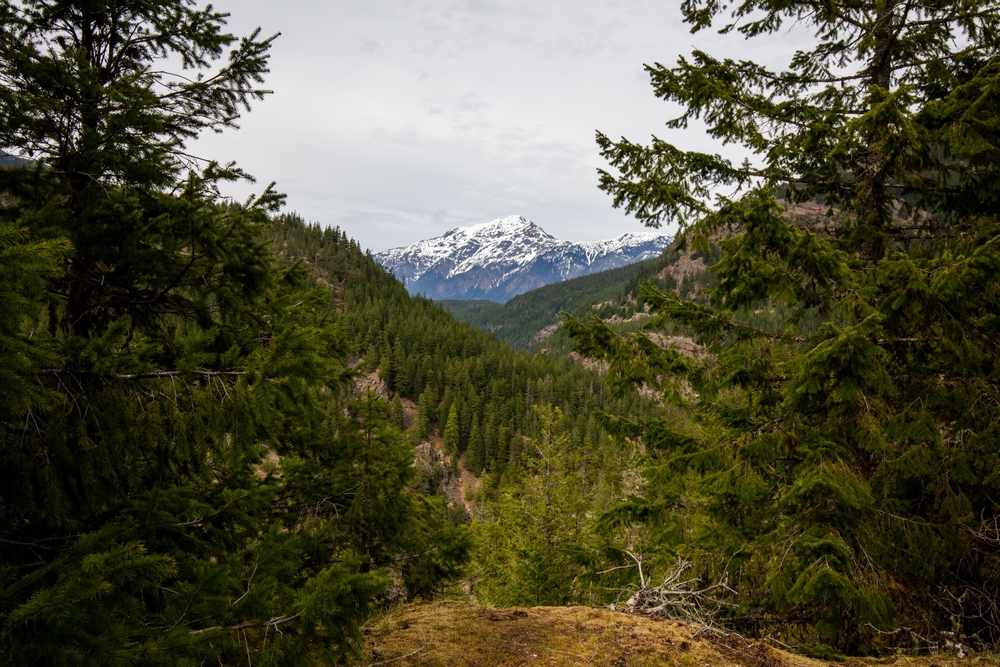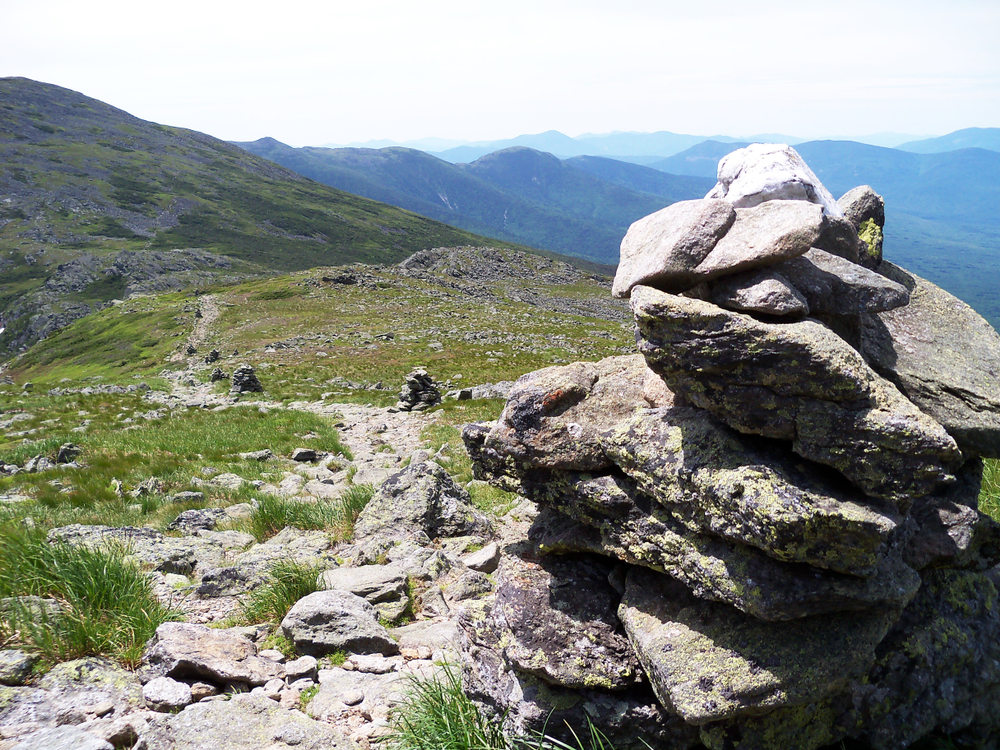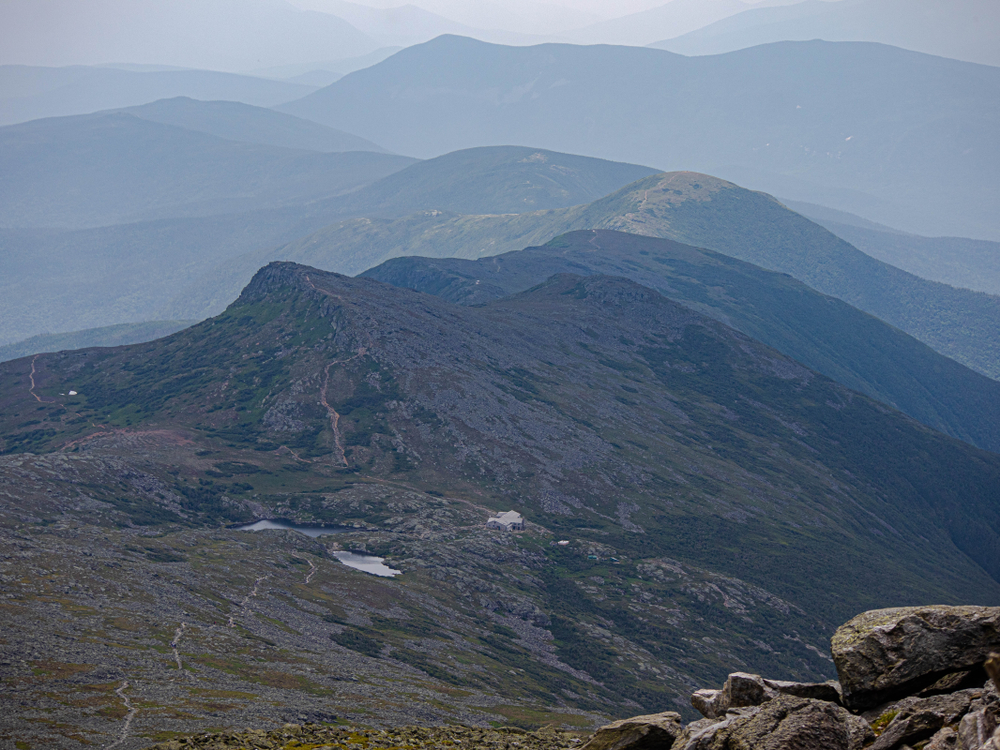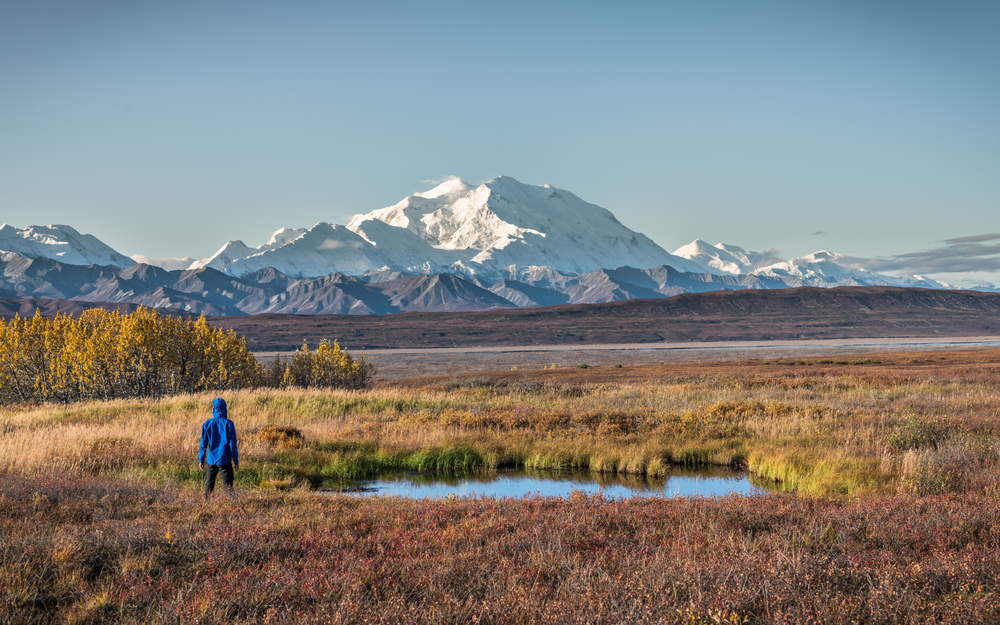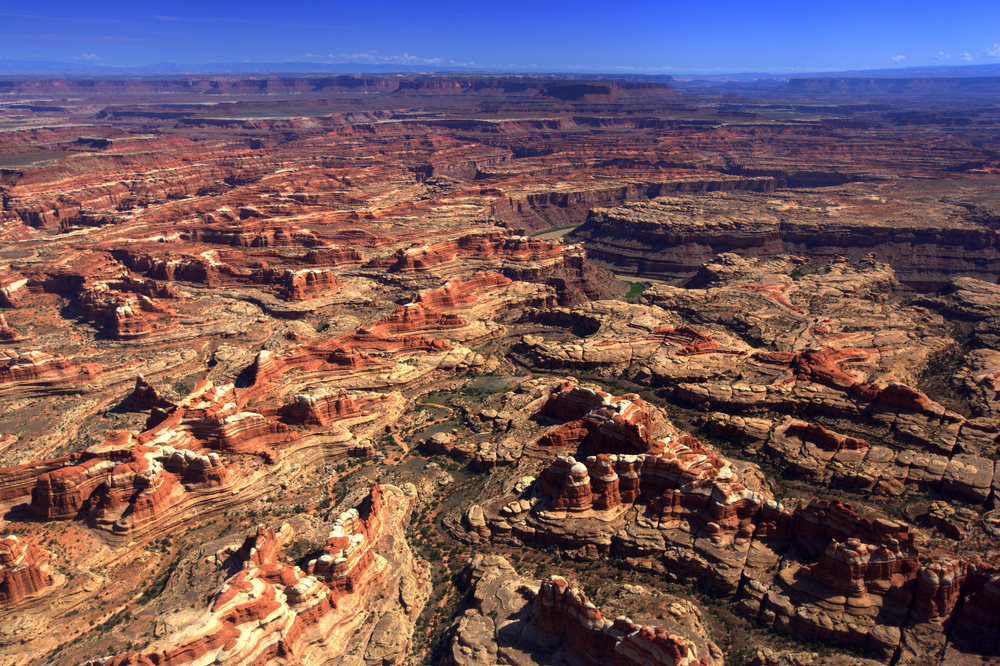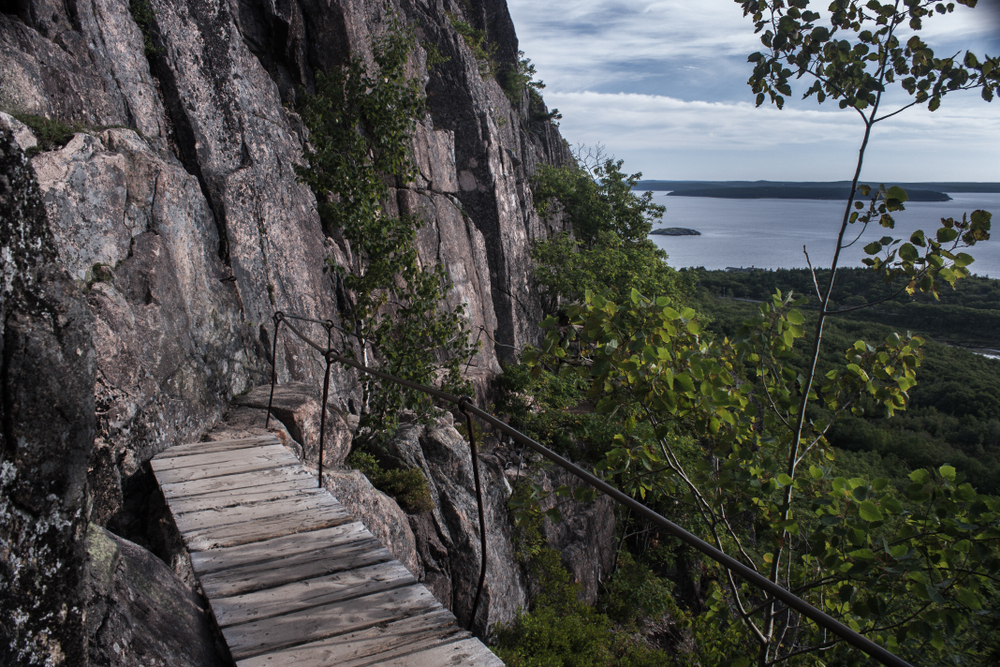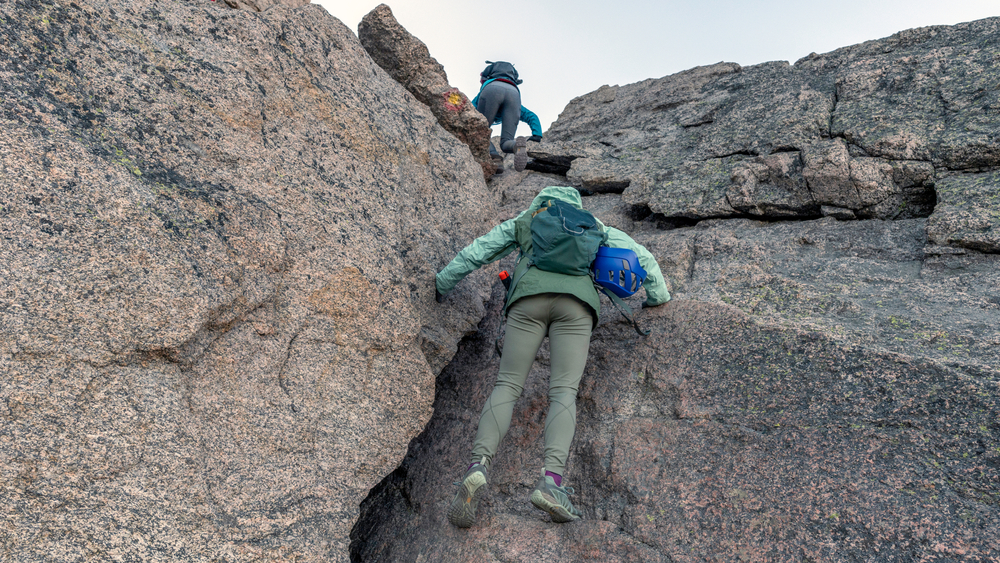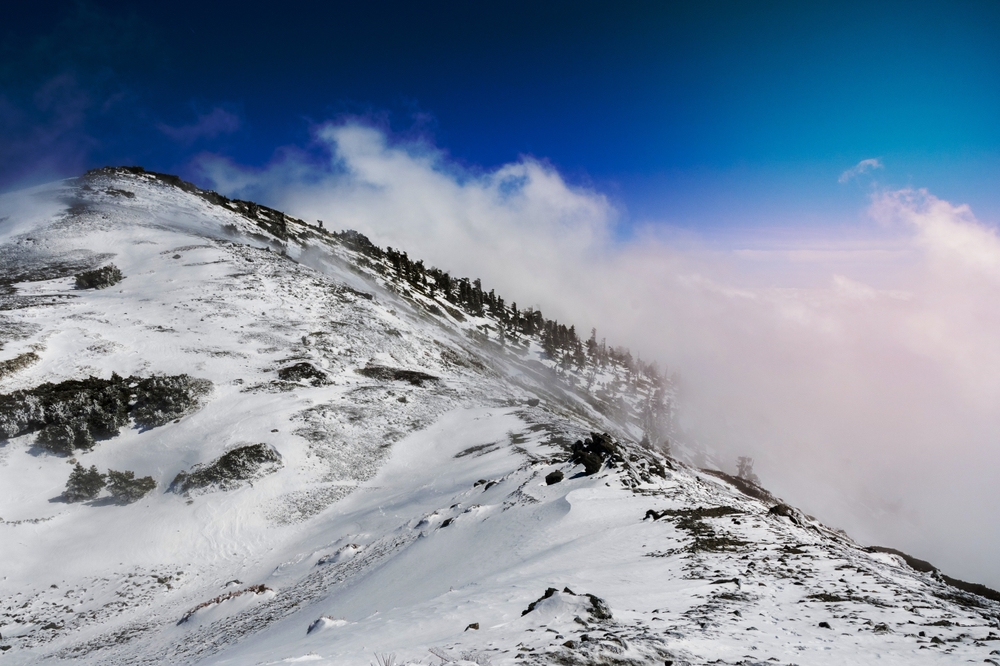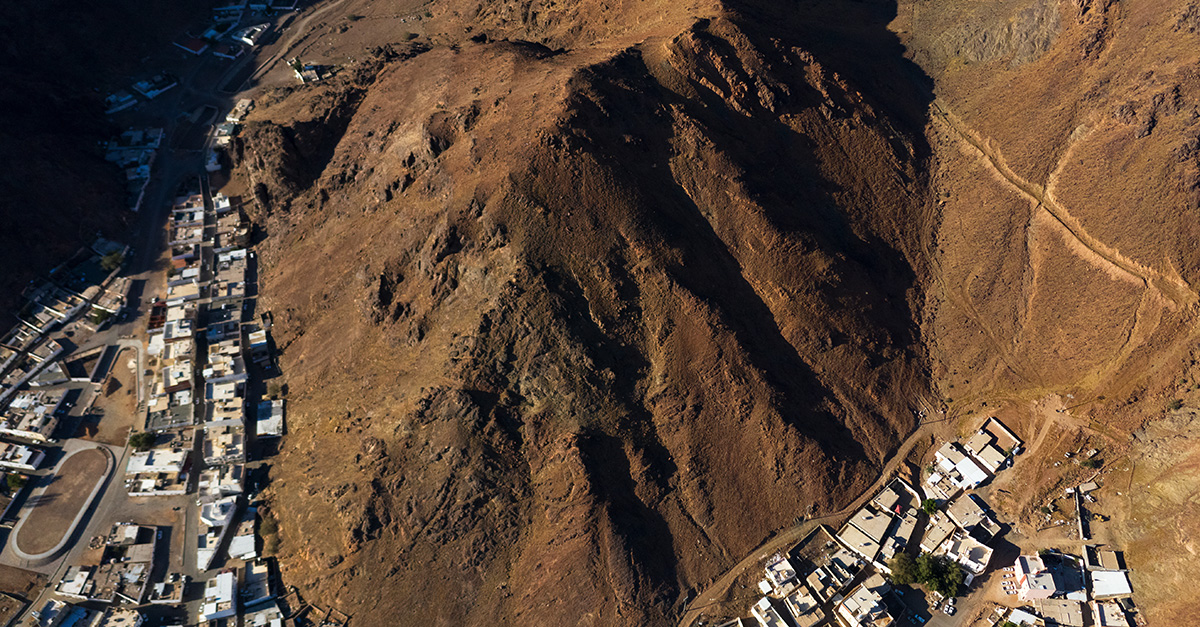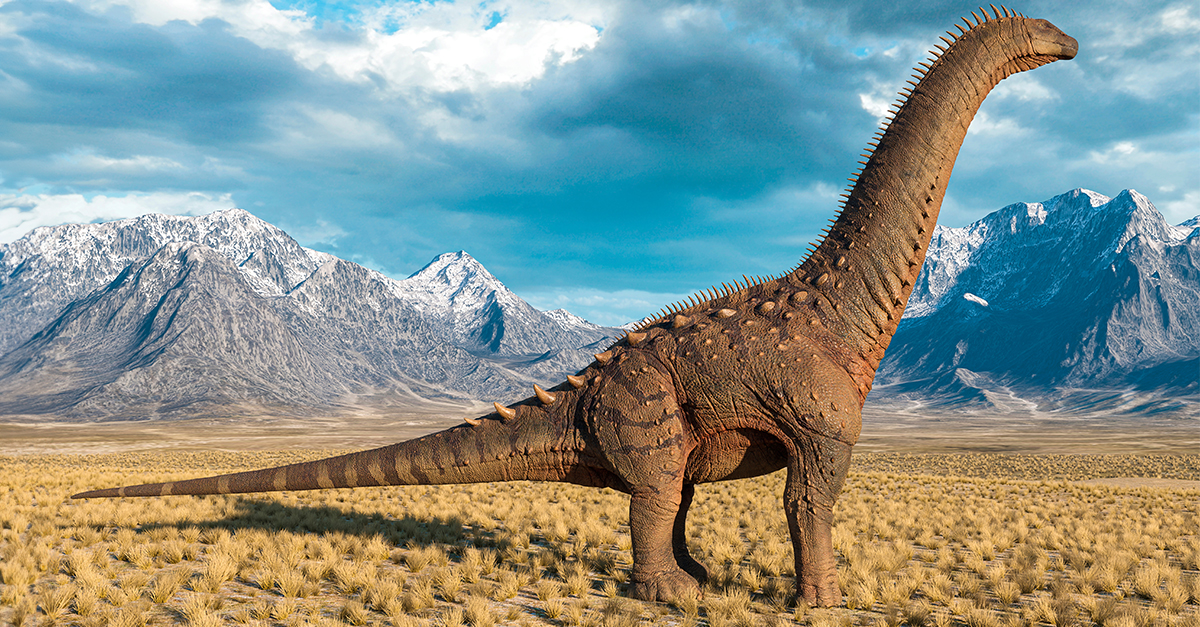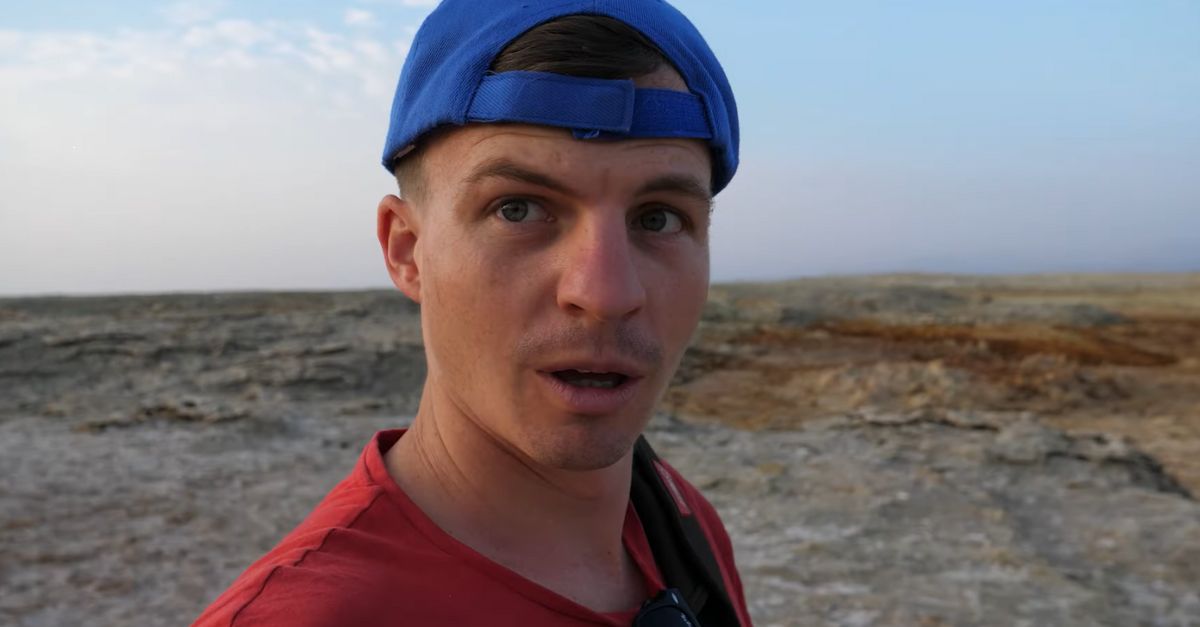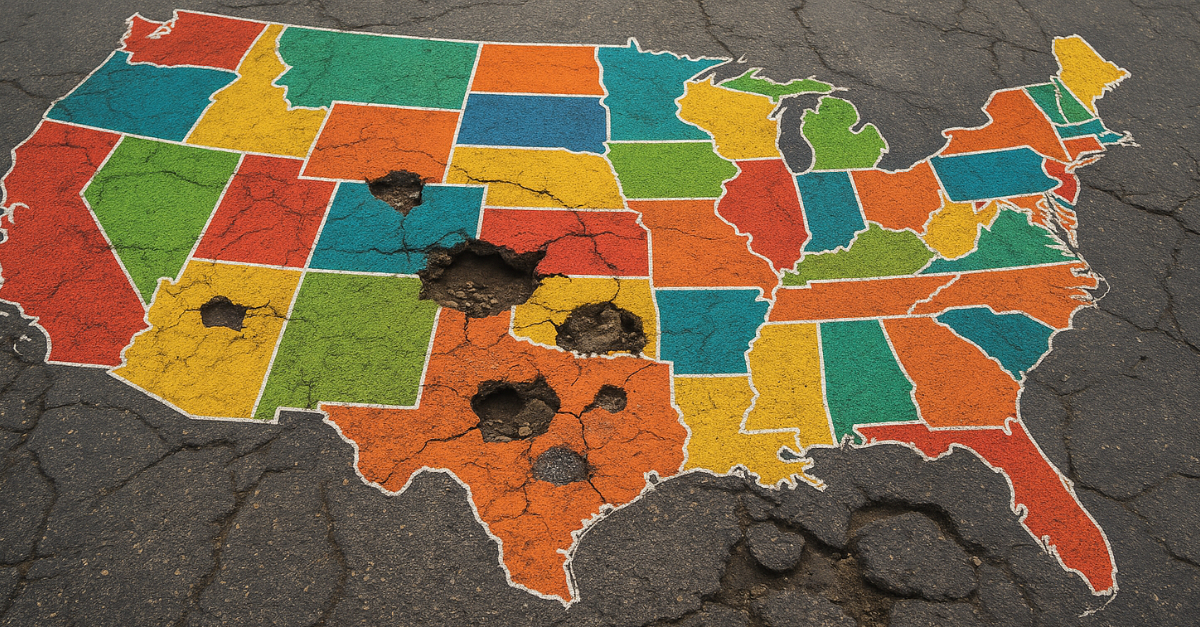How To Survive America’s Deadliest Hiking Trails
From treacherous terrains to wild animals, America is home to some of the world’s most dangerous hiking trails.
You might be a skilled hiker, but do you think what you’ve got what it takes to complete these perilous treks?
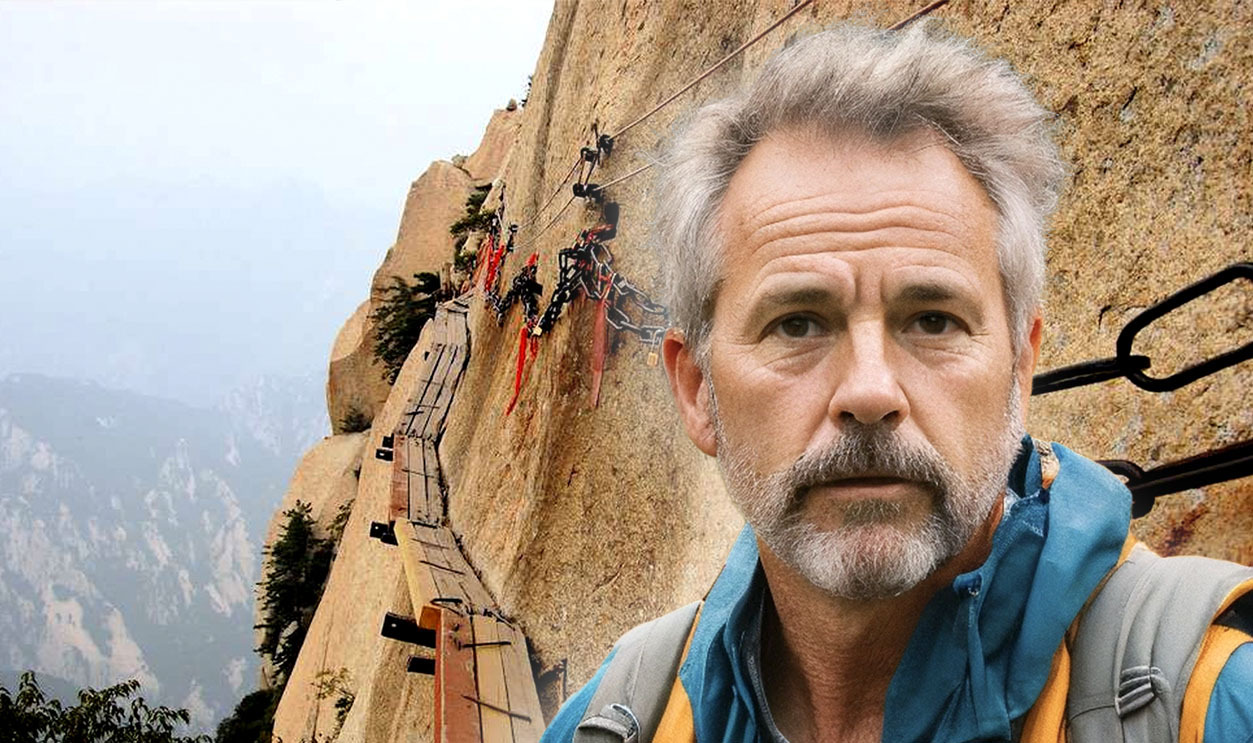
Angel’s Landing, Zion National Park
Hiking Angel’s Landing is one of America’s most popular hikes—it’s also among the most dangerous. Travelers from all over the world come to hike this trail, but not all of them make it home.
Since 2000, at least 13 people have lost their lives trying to hike Angel’s Landing.
Angel’s Landing, Zion National Park (cont’d)
The Angel’s Landing trail starts off easy enough, with the first couple miles being suitable for hikers of all experience levels. But once you get to Walter’s Wiggles, a set of 21 steep switchbacks, things get harder.
While the trail itself can be rough, other hikers are the real danger.
Most of the fatalities at Angel’s Landing have come from too many people crowding along the narrow trail, which has prompted the National Park Service to put safety chains along the route.
Capitol Peak, Colorado
Capitol Peak draws hikers with its breathtaking views, but the trail’s real reputation comes from one terrifying stretch—Knife Ridge.
This narrow, 150-foot granite spine drops over 1,000 feet on either side. In 2017 alone, it claimed five lives in just a matter of weeks.
Capitol Peak, Colorado (cont’d)
True to its name, the peak of Knife Ridge is sharp and narrow. This part of the Capitol Peak trail is not for inexperienced hikers, and one misstep could have you falling to your doom.
If you do try to hike this trail be patient. The entire trail is a 17-mile round trip, but at an elevation of 5,3000 feet, most people take two days to hike it.
Half Dome, Yosemite National Park
Each day, 300 visitors are given permits to hike the Half Dome trail, but only 50 people actually get to make the trek at any one time.
This steep, 400-foot climb features steel cables and wood planks to help hikers, but Half Dome is still the site of 250 accidents every year. And the peak had claimed 13 lives since 2005.
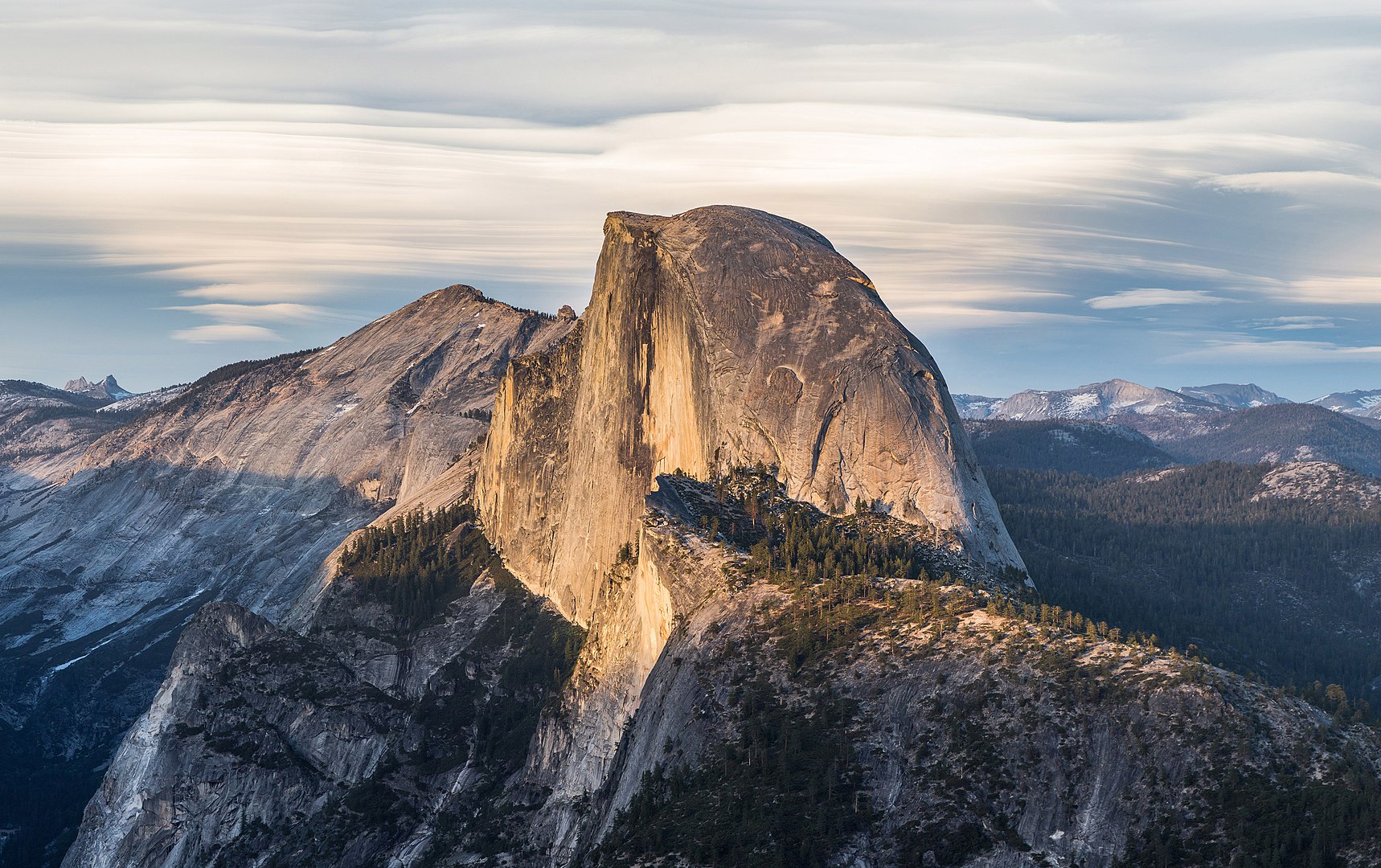 DAVID ILIFF, CC BY-SA 3.0, Wikimedia Commons
DAVID ILIFF, CC BY-SA 3.0, Wikimedia Commons
Half Dome, Yosemite National Park (cont’d)
The Mist Trail is part of the hike to the peak of Half Dome. It’s also very dangerous, with at least 14 deaths there in the last decade.
The Vernal and Nevada Falls are beautiful water features that people are eager to snap pics of. Just make sure you stay behind the railings and away from the pool above the falls.
Huckleberry Trail, Glacier National Park
On the Huckleberry Trail, the biggest threat isn’t the terrain—it’s the bears.
Glacier National Park has the highest grizzly population density in the Lower 48, with one study estimating around 563 bears, roughly one every three square miles.
And according to some biologists, that might actually be an underestimate.
Huckleberry Trail, Glacier National Park (cont’d)
Grizzly bears call Huckleberry Mountain their home, and they’re drawn to all of the berries and fruit that grow around the trail.
The park is closed at the height of berry season, but if you do want to make this trek, make sure you bring your bear spray.
Camp Muir, Mount Ranier National Park
This 9-mile round-trip hike to Camp Muir on Mount Rainier starts out easy enough. But once you hit the Muir Snowfield, you’ll need to be wary of narrow crevasses and cliffs along this glacial hiking trail.
Camp Muir, Mount Ranier National Park (cont’d)
Even in summer, storms blowing in from the Pacific can blanket the trail in thick fog, creating white-out conditions that are easy to get lost in.
An ice axe and first aid kit aren’t optional here—they’re essentials. And with over 90 recorded deaths, hiring a guide might just save your life.
Chinitna Bay, Lake Clark National Park
Chinitna Bay is a popular place to see bears in their natural habitat. It’s a great opportunity to make unforgettable memories—and take a dangerous hike.
According to the National Park Service, there can be up to 20 grizzly bears in any area of the park, so don’t forget your bear spray.
Chinitna Bay, Lake Clark National Park (cont’d)
Most people who visit Chinitna Bay like to take the 25-mile hike to Salmon Creek.
Summer to early fall is the best time to go, since that’s when you can see the grizzlies catching salmon in the surrounding streams.
Pikes Peak, Colorado
Standing at more than 14,115 feet tall, Pikes Peak is the tallest mountain in Colorado.
But in a state that is known for thunderstorms, the mountain attracts a lot of lightning. That makes the mountain’s Barr Trail especially dangerous.
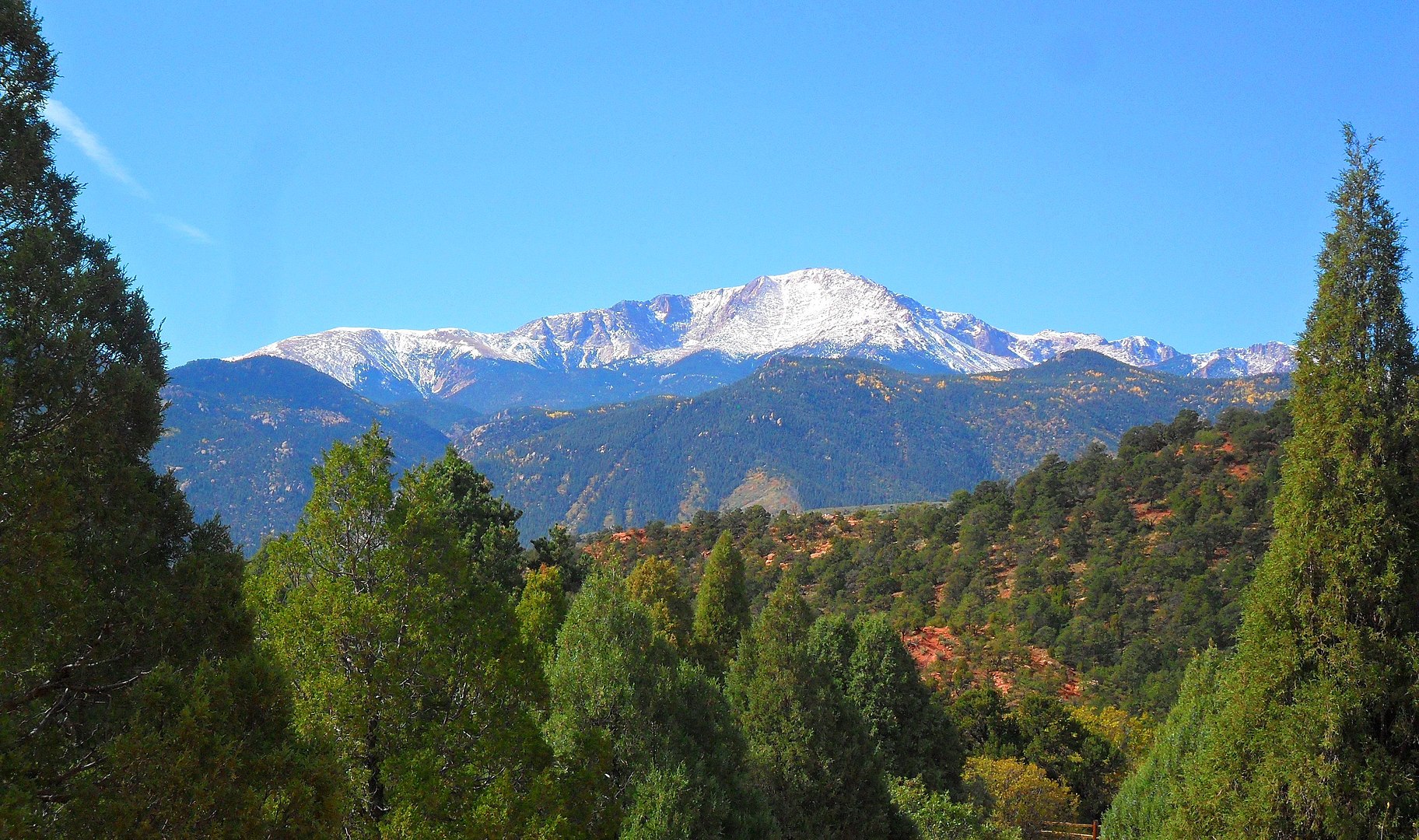 Hogs555, CC BY-SA 3.0, Wikimedia Commons
Hogs555, CC BY-SA 3.0, Wikimedia Commons
Pikes Peak, Colorado (cont’d)
Barr Trail is the go-to route up Pikes Peak—13 miles long and climbing 7,400 feet through rugged mountain terrain.
But don’t take your time if the weather turns. The wind currents here make it a hotspot for lightning strikes, and Colorado leads the nation in lightning-related deaths.
Jack Mountain, North Cascades National Park
This is one the least popular National Parks in the country, probably because it’s the one you’re most likely to die at.
The park’s death rate per capita is almost 22 times higher than the national average. Still, travelers flock each year to witness the incredible Jack Mountain.
Jack Mountain, North Cascades National Park (cont’d)
There’s no easy way to reach the top of Jack Mountain, and most of the popular routes are full of loose rocks.
There’s also the potential for snow on the peak all year. Only experienced hikers should attempts these trails, and they’ll need the proper gear.
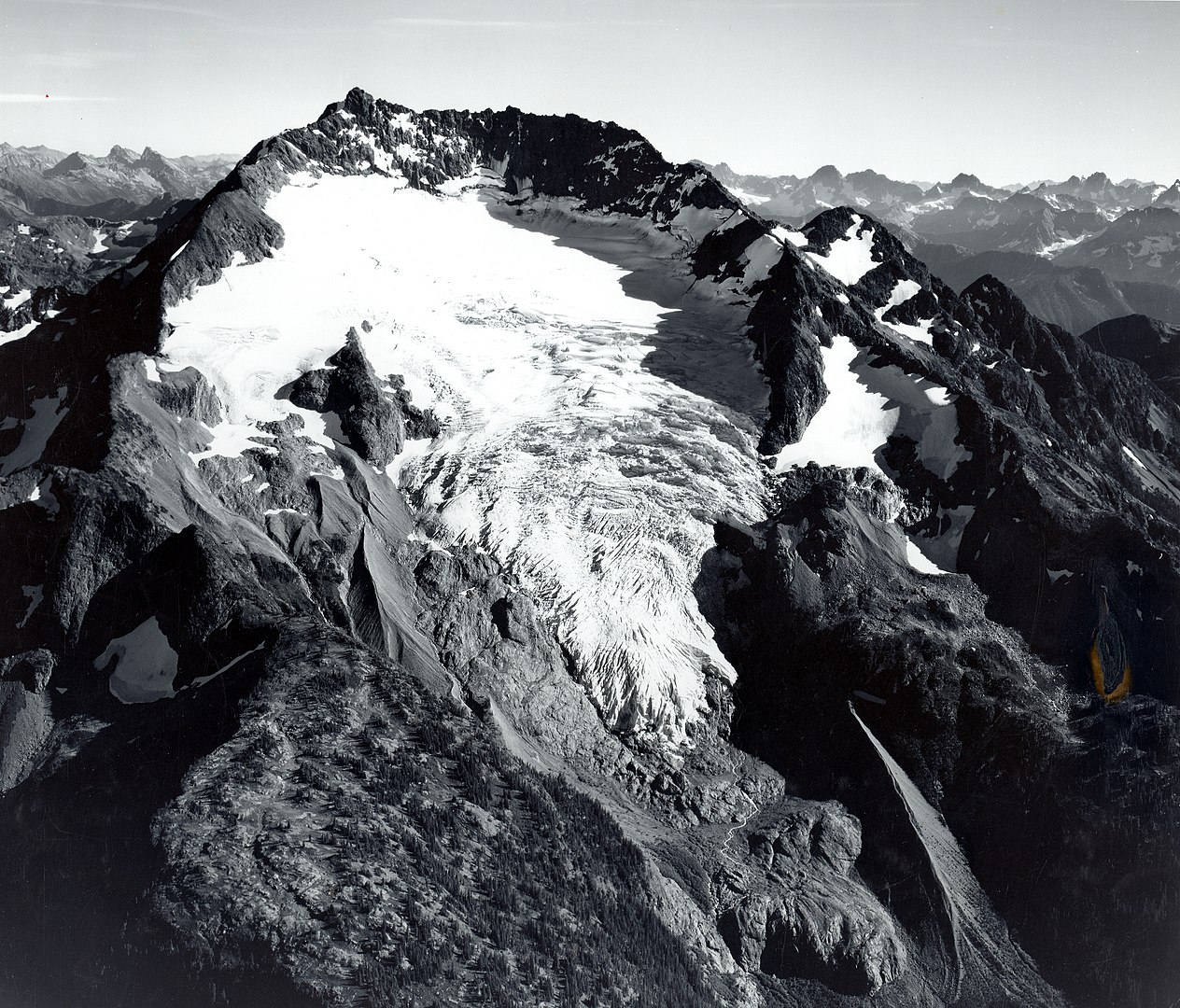 Austin Post, Wikimedia Commons
Austin Post, Wikimedia Commons
Presidential Traverse, New Hampshire
The Presidential Traverse spans 20 miles across New Hampshire’s highest peaks—including the legendary Mount Washington.
It’s the tallest mountain in the Northeast and infamous for some of the fastest—and deadliest—winds ever recorded on Earth.
Presidential Traverse, New Hampshire (cont’d)
Hiking along the Presidential Traverse is dangerous because of how fast the weather can change.
It’s not uncommon for a warm, sunny day to turn into a cold, wet slog up the mountain. Make sure you bring a change of clothes if you plan to tackle these trails.
Denali, Denali National Park
Standing 20,194 feet tall, Denali is the tallest mountain in North America.
It’s also one of the most remote mountains in the world, and the snowy trails to the peak are not for beginners.
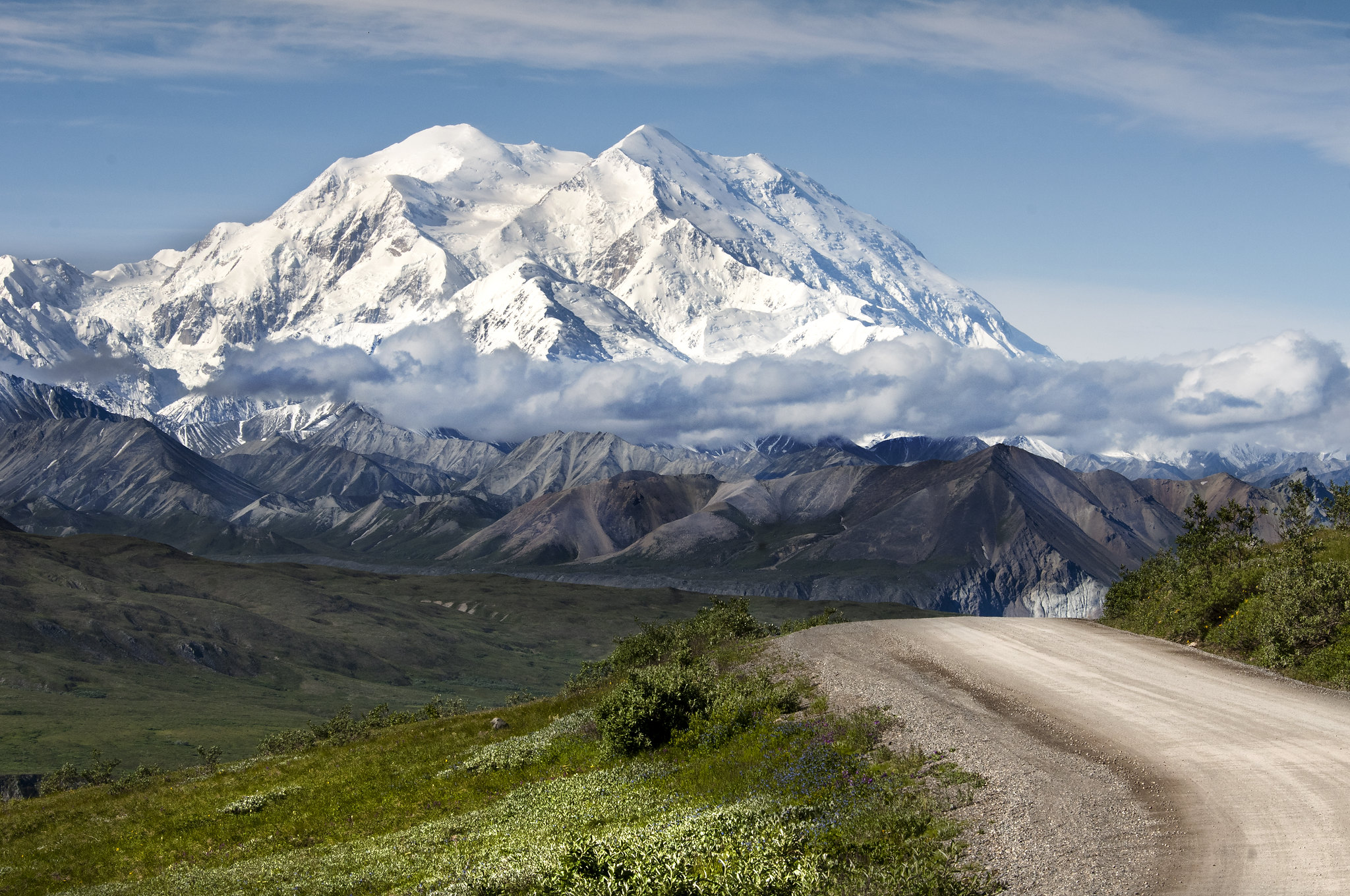 Denali National Park and Preserve, Flickr
Denali National Park and Preserve, Flickr
Denali, Denali National Park (cont’d)
If you want to conquer Denali, you’ll have to brave strong, icy winds, trek across glaciers, and risk getting up close and personal with bears.
This is more of a mountaineering adventure than your average hike.
The Maze, Canyonlands National Park
Welcome to one of the most remote regions in the United States. Even with a solid off-road vehicle, just getting through the Maze District is a challenge.
And that’s before you even set foot on the trail.
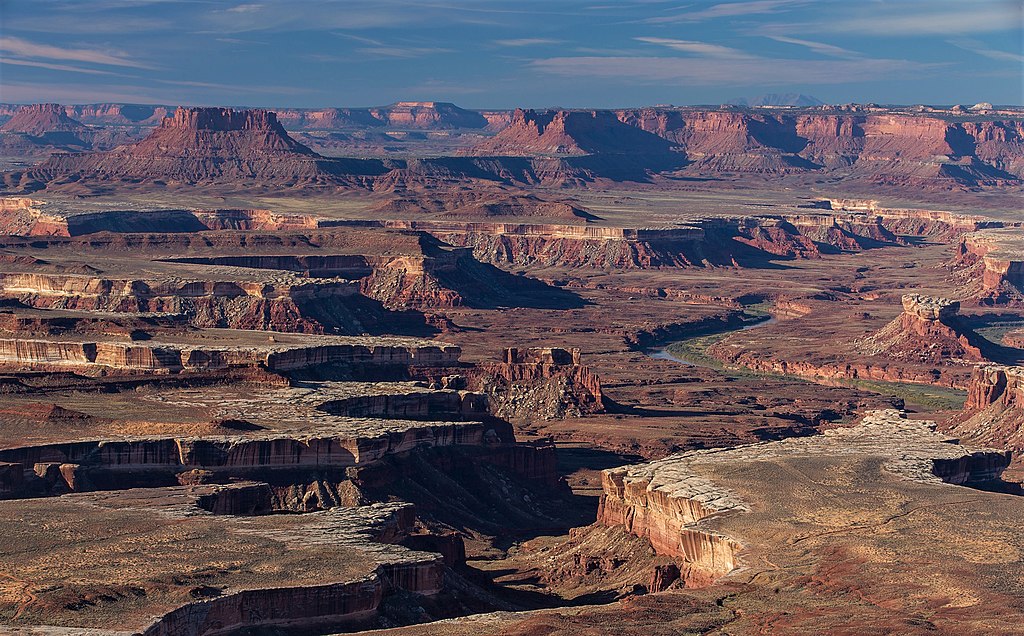 au_ears, CC BY-SA 2.0, Wikimedia Commons
au_ears, CC BY-SA 2.0, Wikimedia Commons
The Maze, Canyonlands National Park (cont’d)
True to its name, the Maze is a winding trail that will inevitably see you take a wrong turn. Carefully following the map and getting through this trail is a mental and physical endeavor that challenges even the most experienced hikers.
There haven’t been any fatalities yet, but if you attempt this trail, bring at least a gallon of water—temperatures can reach 110 degrees Fahrenheit.
Bright Angel Trail, The Grand Canyon
This 9.5-mile trail takes you 4,380 feet down into one of Arizona’s famed canyons. But while the hike down may not be so bad, it’s going back up that’s most grueling.
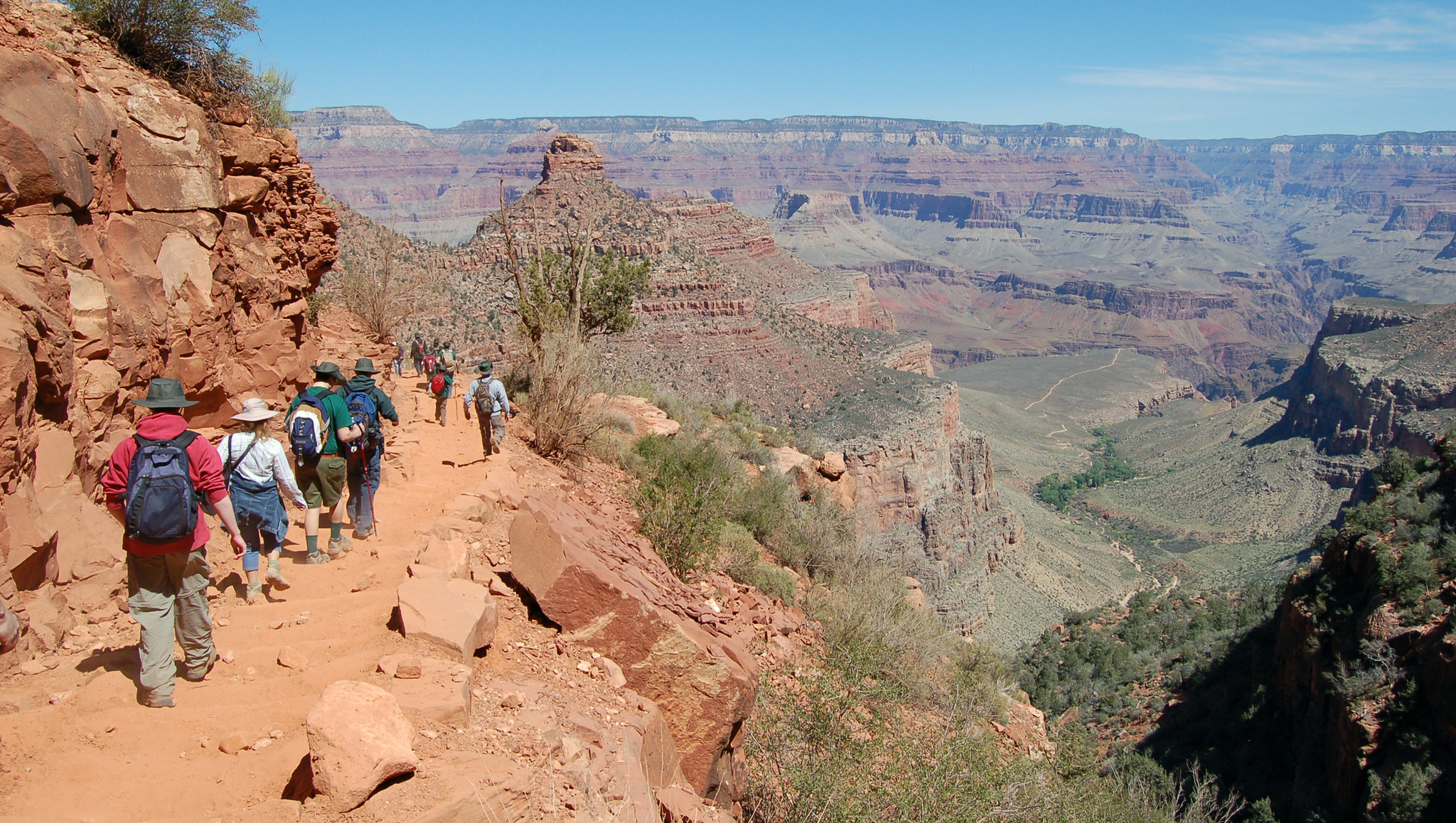 Grand Canyon National Park, Flickr
Grand Canyon National Park, Flickr
Bright Angel Trail, The Grand Canyon (cont’d)
With temperatures soaring up to 110°F, hikers are better off starting before dawn. If you're aiming to finish in a single day, it's smart to rest during the midday heat and tackle the rest after sunset.
In summer, many choose to stretch the trek over two days—leaving plenty of time to rest, hydrate, and not push their luck.
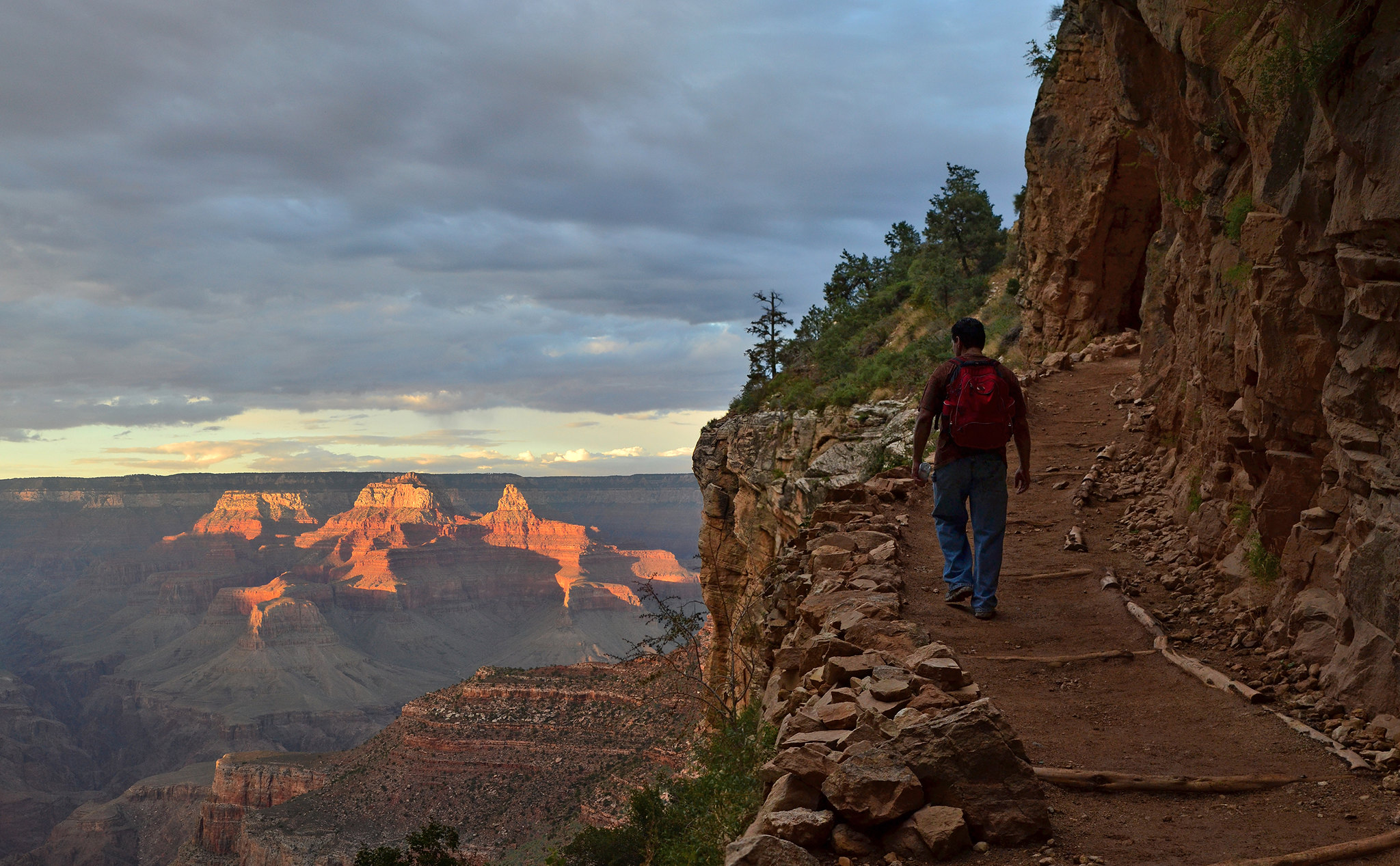 Grand Canyon National Park, Flickr
Grand Canyon National Park, Flickr
Precipice Trail, Acadia National Park
Taking you up a steep cliff, the Precipice Trail, is one of the deadliest trails in Acadia National Park. There are metal rungs to help people make the 1,000-foot climb to the top of Champlain Mountain.
Precipice Trail, Acadia National Park (cont’d)
The climb isn’t too grueling for beginners but anyone with a fear of heights should skip this trail, and it does take physical strength to get through the hike.
The National Park Service warns hikers against descending the Precipice Trail. Take the safer North Ridge Trail to get down the mountain.
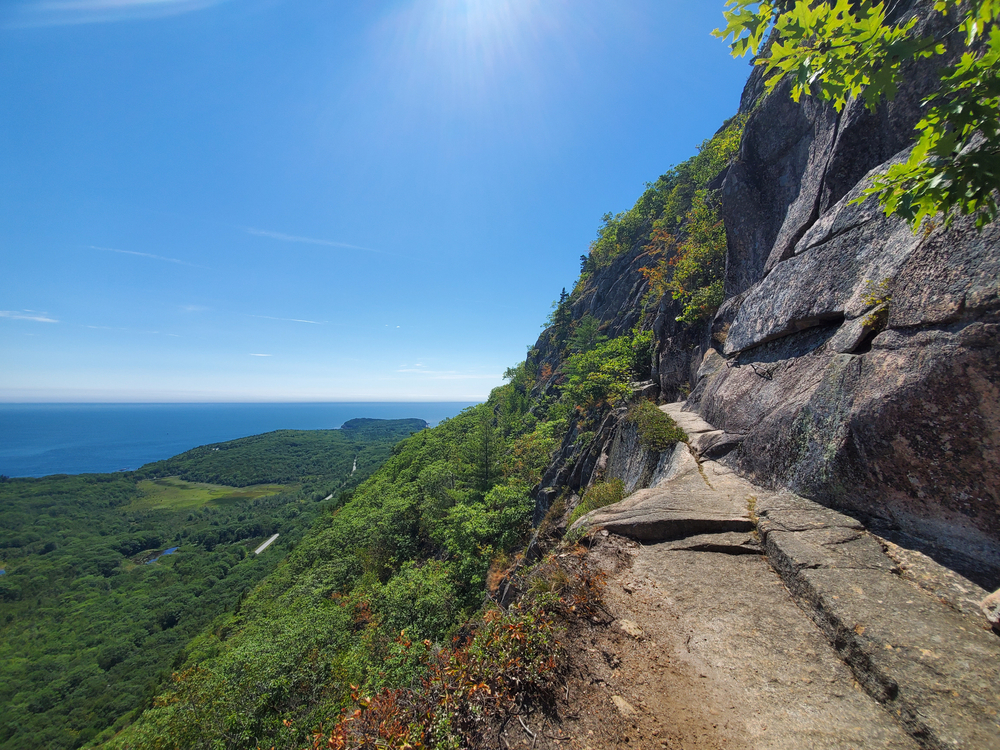 Shoshana Weissmann, Shutterstock
Shoshana Weissmann, Shutterstock
Longs Peak, Colorado
Making the hike up Longs Peak is one of the most thrilling things to do in Colorado, but it’s also very dangerous.
Situated in the legendary Rocky Mountain National Park, Longs Peak rises 14,259 feet above the ground.
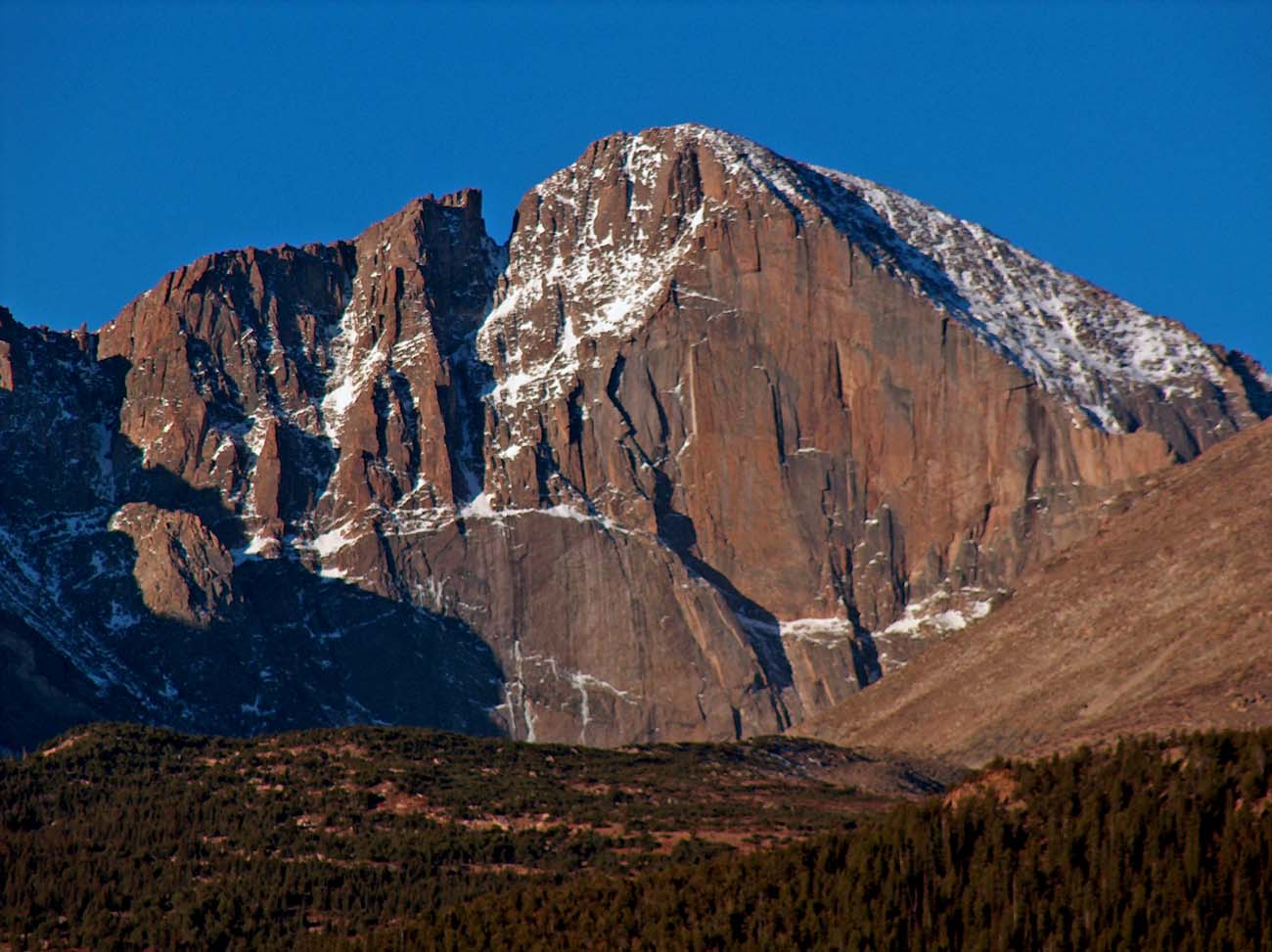 ProfPete, CC BY-SA 3.0, Wikimedia Commons
ProfPete, CC BY-SA 3.0, Wikimedia Commons
Longs Peak, Colorado (cont’d)
Most tourists take the Keynote Route—the main trail to the mountain’s summit.
It’s a tough climb that demands constant attention, with loose rock, narrow ledges, steep drop-offs, and the ever-present risk of falling debris.
Mount San Antonio, California
Also known as Old Baldy or Mount Baldy, this perilous mountain stands more than 10,000 feet above sea level. The peak is almost always covered in snow and ice, even in the summertime.
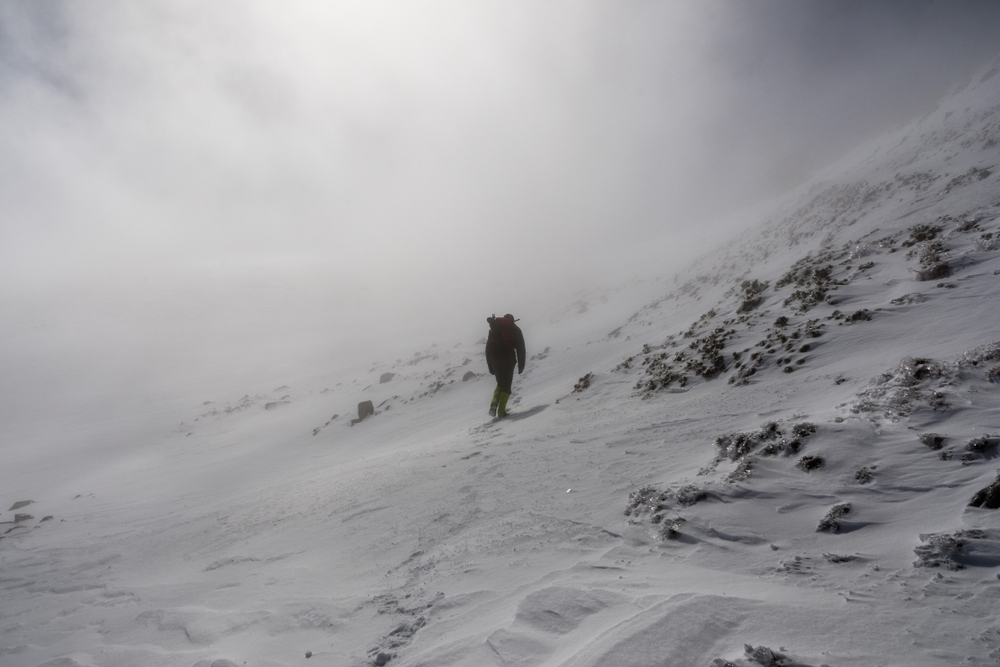 Sundry Photography, Shutterstock
Sundry Photography, Shutterstock
Mount San Antonio, California (cont’d)
The extreme cold conditions and high elevation make Mount San Antonio one of the most dangerous places to hike in America. If you’re going to attempt this trek, go with the proper equipment and be prepared for possible avalanches.
Avalanches are less of a concern in summer, but it’s easy to get lost on the trails here, so don’t make sure you have a detailed map of the area on hand.

